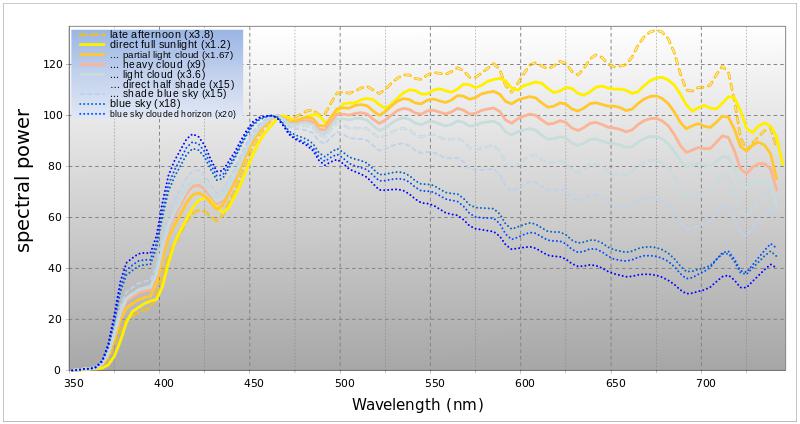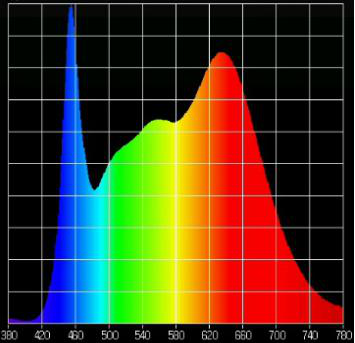In simple words, full spectrum light is what include lights that covers the electromagnetic spectrum from infrared to near-ultraviolet, which also means all of the light spectrum necessary to grow plants and sustain animal life. We say sunlight is a full-spectrum light. Normally, the light wavelengths between 430 and 660nm are basically used for the process of photosynthesis, but plants are able to “see” and respond to a much wider section of the spectrum, ranging from 280nm to 730nm —We human being can capture all the colors of a rainbow as the visible spectrum, but the plants can capture more than that. So, in some ways, plants have much better “eyesight” than humans.


Sunlight Spectrum
We know that each kind of light has different promotion effects on plant growth from the various queryable data. So why don't we choose a single-spectrum grow light to adapt to different growth cycles? There are three main reasons: First. There is a certain degree of uncertainty in the growth cycle of the plants, and the growth rate of the same batch of crops is not necessarily the same. Irrational lighting conditions will adversely affect the plants. Second, The work is more tedious, and the labor cost will be more if the crops need to be transported to different lighting conditions. Third, although each kind of light has different promotion effects in different growth cycles of plants, the neutralization of other lights can make its effect more obvious.
With full spectrum, the grow light becomes more versatile. Such as:
UV-A and UV-B Light (280-400nm) – Offer benefits in moderation. According to some studies, the UV light may prevent elongation and increase the production of color and fragrances. Especially, UV-B has been proofed to encourge THC and the overall cannabinoid content in cannabis.
Blue Light (400-500nm) – It has a huge effect on the suppression of stem elongation, development of thicker stocks and larger rooting zones, chloroplast movement, absorption of carbon dioxide and the plant’s circadian rhythm. Plants growing under blue light with a short photoperiod resulted in higher cannabinoid concentrations.
Green Light (500-600nm) – Even though less research has been conducted on the effects of green light on plant photomorphogenesis, some researchers have discovered that it is able to deeply penetrate the plant canopy.
Red and Far-Red Light (600-700nm) – Stimulates seed germination, leaf unrolling, chlorophyll formulation and stem elongation. It also plays a role in the promotion or suppression of flowering, thereby triggering or preventing plant reproduction.
As we talked before, the full spectrum light is intended to mimic the sunlight, LEDs are garnering increasing attention for it can be adjusted to capture the full spectrum of colors. While high pressure sodium (HPS) and metal halide lamps may provide the right light for photosynthesis, these lights fail to allow the user to tailor the wide range of light wavelengths that can have an impact on overall plant health.

ll Enlite LED grow light applying with self-designed full spectrum LED chips, which including the IR and UV wavelengthes. More balanced light enables it to play better economic benefits, with excellent waterproof performance, unique heat dissipation design, stable light decay performance, longer working life, and better after-sales service. Enlite LED Grow Light should be your unique choice!